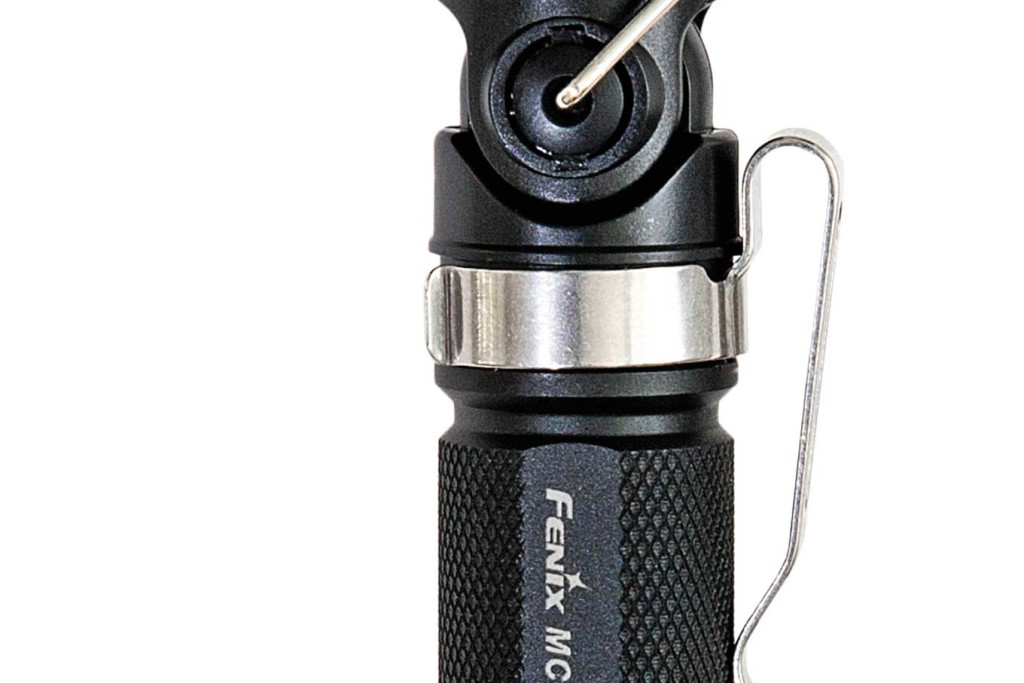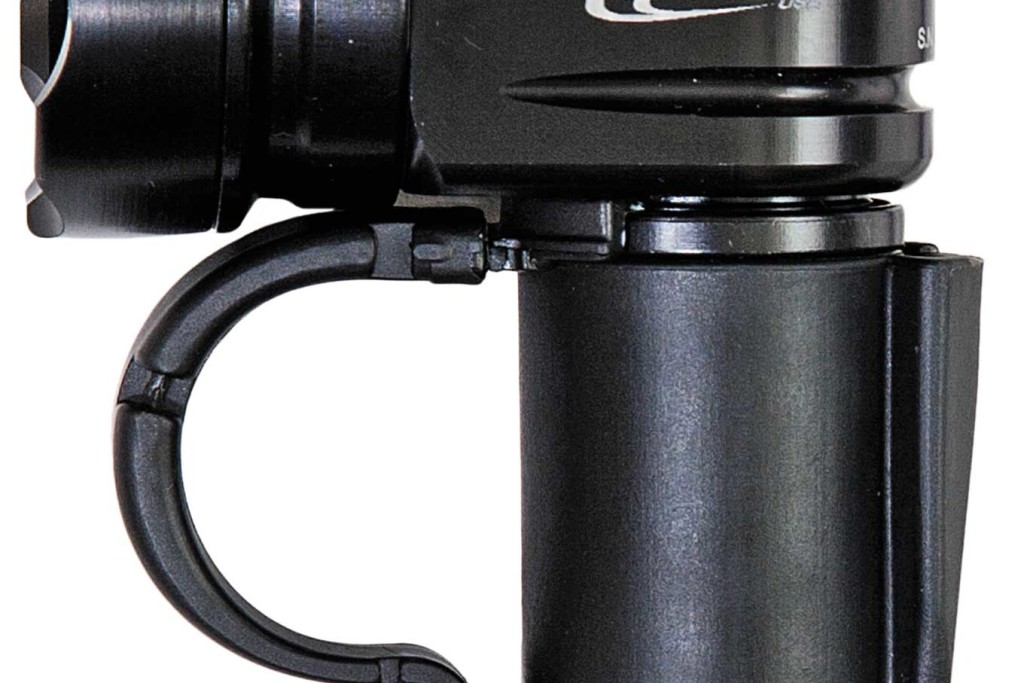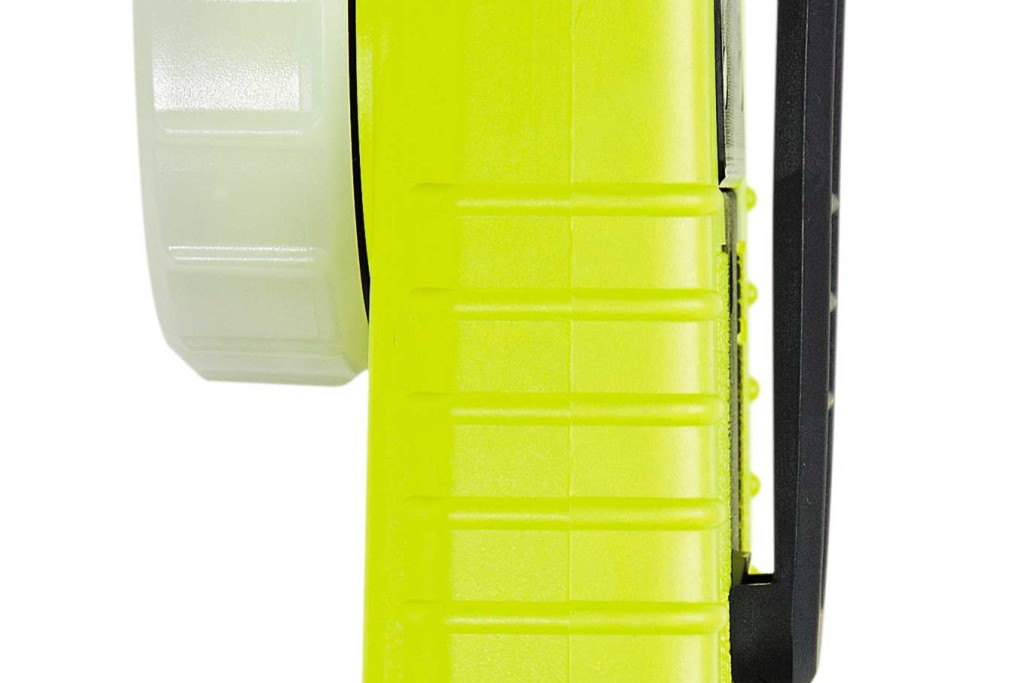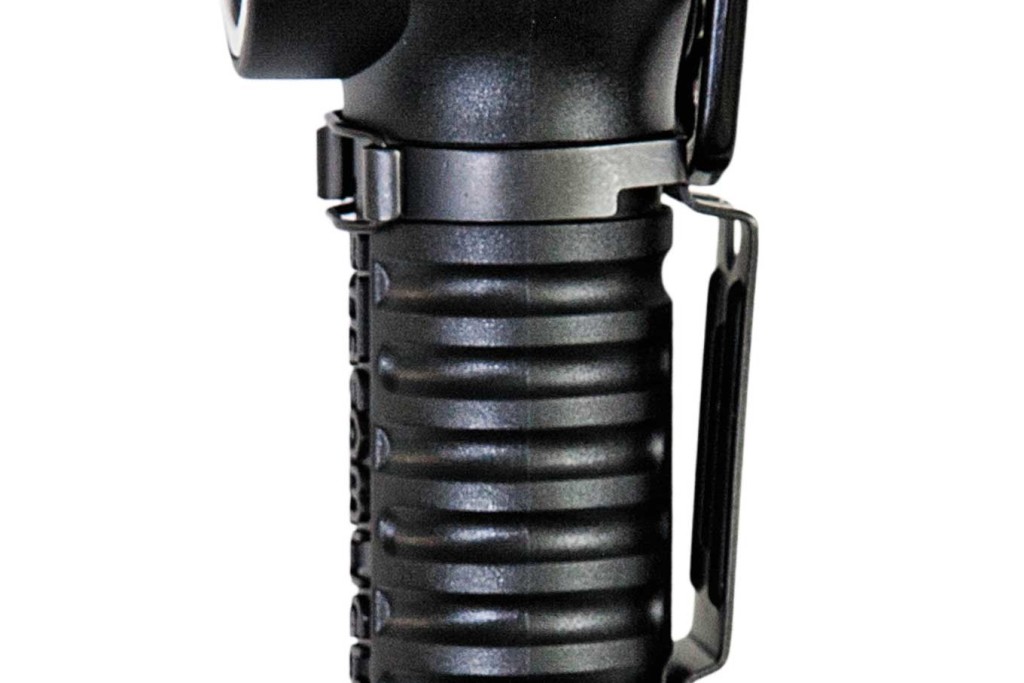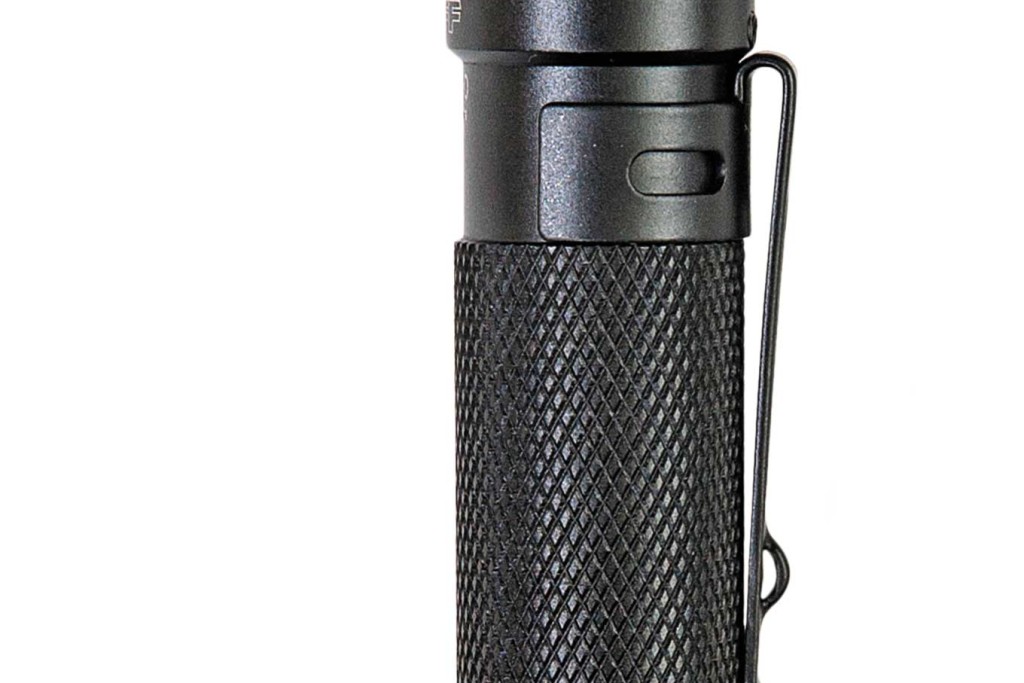In This Article
Warning!
The concepts shown here are for illustrative purposes only. Seek a reputable instructor before attempting any techniques discussed or shown in this story.
When people fight, it's not unusual for at least one of them to end up on the ground. While it's probably not the 90 percent probability touted by the people who teach grappling for a living, the odds are still pretty high so it makes sense to add some ground-fighting to your combative skillset. But before you run down to the local jiu-jitsu school and sign up, you might want to think about what you're really trying to achieve.
Since you happen to be reading a magazine about survival, let's take a leap of logic and assume that your major concern is defending yourself against a real-life violent attack. If that's the case, skip the latest UFC pay-per-view and head to the Internet — specifically YouTube, Live Leak, and similar video sites. Type in “street attack” and take a look at a few videos. Chances are good that in those videos you'll see some of the victims get knocked to the ground. Chances are also good that instead of following their target to the ground to finish the job, most of the attackers will take the logical, easy, and brutal route of kicking and stomping their victim. They sure as hell won't get him in a cross arm-bar or triangle choke to take his wallet.
No doubt criminals enjoy watching MMA fights just as much as the rest of us, but when they've spotted a target, they'll stick to what works. Kicks use the largest, strongest limbs to generate force, and stomps use body weight to add to that power. Since both are typically delivered with shoes or boots to a target supported by a solid surface (the ground), the damage they can cause is devastating.
A medical study published in 2004 focusing on the pathological effects of kicking deaths determined that kicks are 35 to 45 percent more powerful than hand strikes and that powerful kicks on the ground generated forces equivalent to a 30-mph head-on car crash. Learning how to keep that from happening to you should therefore be a priority in your training and preparations.
Why? It's not rocket science to conclude that desperate people will do desperate things during desperate times. A group of marauders could ambush you after law and order have ceased to exist. You could be surrounded by an angry mob during some intense civil unrest. Or, tomorrow you could simply be walking out of a store to your car and get jumped by a thug. Therefore, it's never too late to learn how to survive an unexpected invitation to a boot party.
Have a Nice Trip
The best defense against getting kicked and stomped is not ending up on the ground in the first place. You should obviously make that a priority in all your training, but don't pretend you're immune to getting knocked down. Once you accept that, your next step should be to learn how to fall without getting hurt. This is actually one of the most useful skills you can learn and a good reason to train in a martial art like judo or jiu-jitsu that incorporates lots of throws.
Unfortunately, traditional ukemi (break-falls) that involve slapping the mat to disperse the force of your fall don't translate well to concrete and asphalt. The basic concepts of rounding your body (like the rockers on a rocking chair), tucking your chin to protect your head, and using your feet and butt to absorb the shock of a fall are more adaptable to hard surfaces than slap-style falls. The safest method I've found is to first learn the traditional falls on a mat, and then deemphasize the slappy part to focus on the other mechanics. Once you can fall on a mat without slapping, gradually progress to thinner mats and harder surfaces.



Falling safely is a vital skill in ground-fighting. The slap-happy break-falls that work on a mat don't translate...
Get Up
Another key tactic that will keep you from becoming the guest of honor at a boot party is to not stay on the ground if you end up there. Getting up quickly gets you back in the fight on much better terms, but, again, you need to do it in a way that fits the reality of your situation.
MMA rules prohibit kicking a downed opponent, so many competition methods of getting up involve “posting” with the hands to get your feet under you more quickly. Yes, this is fast, but it leaves your head an unguarded foot magnet. If your physical attributes allow it, you should learn how to get up without having to use your hands so you can use them to guard your head throughout the process.
Basic Ground Defense
If you can't get up before your attacker closes the distance, you need to assume a good defensive posture. This position must allow you to protect your vital areas and to disable anyone who comes within range. The best weapon for this is your strong-side leg, so you also want to make sure you can pivot your body effectively to aim that leg and keep it between you and your attacker. Assuming the worst-case scenario — that your attacker has friends — your defensive position must also allow you to achieve as close to a 360-degree defense as possible.

Many martial arts advocate laying on your side and side-kicking your attacker. That may work well with a single...
The position that best meets all these criteria is lying on your back with your chin tucked to your chest, your arms guarding your head and neck, and your legs drawn in. The foot of your non-dominant leg should be planted flat, close to your butt so it can turn your body and direct your other leg, which is chambered to thrust out at your attacker's shins and knees.
Your basic plan goes like this: When an attacker tries to close in, pivot to keep him at your feet. When he gets close enough, stomp straight into his shin or knee with your power leg. Your kick should be a thrusting motion with your heel or the bottom of your foot, and your toes should be turned out so your foot hits perpendicular to his vertical leg.
Kicking low and targeting the attacker's legs keeps him as far away as possible and makes it hard for him to block. The higher you kick, the closer he can get to you and the easier it is for him to block or grab your foot. If you land a solid kick and lock out his leg, his head may pitch forward. If this happens, take the shot and go for it, but otherwise keep your kicks low.
This same tactic can also be used to defend against kicks, if you can get your feet between you and the incoming kick in time. If he's kicking hard and fast, kick the shin of his kicking leg as it approaches. Don't just block it — kick it. Then immediately follow with a full-power kick to his supporting leg, ideally at the knee or the inside of the ankle. If he's slower or draws his leg back very far before kicking, don't wait for it. Attack his support leg directly, aiming for the knee or ankle, which suffer more damage when they're supporting the body's entire weight.

The author's preferred guard position protects your spine by lying flat, protects your head with both arms, and...
Kicks from the Sides
If you can't pivot quickly enough or if you're facing multiple assailants, you may find yourself getting attacked from the side. To defend against soccer-style kicks to the ribs or head, raise your knee on that side of your body until it contacts your same-side elbow while still protecting your head. As the kick approaches, roll toward it and use the frame you created with your arm and leg to stop it short. This will jam it before full extension and kill its power.
Once you've stopped the kick, immediately lower the elbow of the blocking arm to your ribs so your hand hooks the attacker's kicking foot and pins it to the ground. As you do this, spin your legs toward your attacker and press the shin of your blocking leg against the shin of his kicking leg. Done properly, you'll pin his kicking foot to the ground and lock out his knee, throwing him off balance. With him momentarily tied up and fighting to keep his balance, take the opportunity to drive the heel of your other foot into his groin. Besides creating impact and pain, your objective is to drive his hips backward and put him on the ground. If you're lucky, he'll fall flat on his tailbone and fracture it. If you have a different kind of luck, the groin shot will bring his head forward as another target.
As soon as you have the opportunity to get up, seize it. As you do, pin his feet to the ground so he doesn't try to kick you again and keep him down by targeting his ankle with stomps of your own.
Practice this tactic on both sides, learning to quickly create the frame, roll into the kick, and trap the kicking foot. Also have your training partner kick with both his left and right legs so you learn how to adapt based on what you get. If his choice of kicking leg makes it difficult to kick him in the groin, practice kicking his support-leg knee instead. If he's too close to achieve shin-to-shin pressure, hook your thigh behind his foot to lock it down and stick with the plan.

When the assailant attempts to kick him from the side, the defender creates a knee-to-elbow “frame” and...
Not Getting Stomped
Stomps are incredibly dangerous because they're powerful and put you between a boot and a hard place. According to the aforementioned 2004 study, the head and neck are the targets of choice. Sixty-four percent of the cases studied had skull fractures and 29 percent had fractures of the throat skeleton. On the positive side, these statistics strongly indicate that an attacker who tries to stomp you will seek a target that's close to your hands. That actually helps your defense.
As before, if you can't get up or get your feet between you and your assailant, protect yourself by assuming the flat-back guard described earlier. When the attacker raises his foot to stomp, quickly reach up and grab it with both hands. While it's still at its highest point, forcefully move the foot to one side of your body or the other. Redirecting his foot in the middle of the stomp will throw him off balance and may put him on the ground. If not, it'll at least open up targets for you to attack. If you moved his foot across your body, his groin will be staring at you waiting for a knee or a kick. Planting his kicking foot on the same side will probably turn him and expose his back. Kick the back of his knees to drop him or literally kick his ass to drive him away and create a chance to get up.
“Kicking a man when he's down” is a go-to tactic for street criminals. If you want to be a survivor instead of a stain, make preventing it and defending against it a priority in your training.

8 While distracted by one assailant, our defender gets cold-cocked by a second. He manages his fall and assumes a good...
Geometry of Kicking High
One widely taught ground-defense tactic is the “bicycle kick.” Basically, you lie on your back and throw repeated left and right kicks at your attacker's groin or midsection. Done aggressively, the motion of your feet looks like you're riding a bicycle — hence the name.
In my opinion, there are several disadvantages to this technique. Because of the motion it requires, your feet must be vertical as you kick, giving you a fairly narrow “swath” as you kick. Since both feet are kicking, you must also rely on your hands and arms to pivot your body to change direction. Lowering your hands to the ground to pivot leaves your head and neck dangerously exposed, and turning while trying to maintain a continuous barrage of kicks is harder than you think.
Perhaps the greatest shortcoming of this tactic is that it assumes that your attacker will willingly wade into a blender of flailing feet. If he's smart enough to go around, turning to keep up with him will be tough. If he's even slightly smarter, he'll swat your feet aside and walk right over you.

Kicking low, specifically to the shin and the knee, keeps your attacker at maximum range and is likely to break things...
If you think about it, your kicking leg is what creates distance between you and your assailant. The higher you raise it, the closer your attacker can get to you and the easier it is for him to parry or grab that leg. Conversely, kicking low keeps him farther away, makes your kicking leg difficult to block, and allows you to attack his knees, ankles, and shins — targets that can destroy his mobility and pave the way for you to get up and get away. For these reasons, it makes more sense to wait for your attacker to get close and present a target before you kick. Then, pick your shot and kick a target that has a high probability of taking him out of the fight while keeping you as far away from his weapons as possible.
One claim you'll sometimes hear from advocates of the bicycle kick is that it has been proven in force-on-force training. While I'm sure it has fared well in that context, it's important to remember that scenario-based training has to be limited to ensure safety. If participants could actually kick role players in the knees, that tactic would also prove effective, but you'd break a lot of role players and your training sessions would be painfully short. Similarly, punching with a boxing glove can be very effective and can be practiced regularly in training, but that doesn't mean it's more effective than ramming your fingers into someone's eyes. Some tactics are just difficult to practice without causing real injury.

The higher you kick, the closer your attacker — and his weapons — can get to you. He also easily swat your feet...
About The Author:
Michael Janich is a noted personal-defense instructor, a member of the prestigious Black Belt Magazine Hall of Fame, and the founder of the Martial Blade Concepts system of knife tactics. He also worked closely with the late Col. Rex Applegate and is one of the foremost modern experts on handgun point shooting.

































